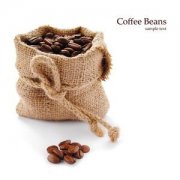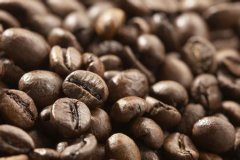Colombian coffee is classified according to defective beans.

1. Classification according to defective beans
There are two kinds of defective beans:
-the first one: it's called a first-class flaw.
-the second kind is called secondary defect.
First: major defects (defects that affect the taste characteristics of coffee): black beans, moldy beans or sour beans
Private raw bean exporters: no more than 12 first-class defective beans
National Coffee Committee: no more than 8 first-class defective beans
Second: secondary defects (defects that affect the appearance of raw beans):
Discolored beans (old beans, over-dried beans, soybeans), broken beans, insect bite beans, shell beans, unripe beans, special-shaped beans
Private raw bean exporters: no more than 60 minor defective beans
National Coffee Committee: no more than 35 secondary defective beans
Note: the number of major defective beans can be replaced by the number of secondary defective beans, and one primary defective bean is equivalent to 10 secondary defective beans.
Boutique coffee
The number of primary defective beans in Grade AA per 500g coffee is zero and the number of secondary defective beans is less than 5.
Grade A has less than 3 primary defective beans and less than 8 secondary defective beans per 500g coffee.
There are less than 8 primary defective beans and less than 35 secondary defective beans per 500g coffee in Grade.
Second, according to the size of the bean
Maragogype Marago is a special tree species with large bean body and low total yield.
No more than 5% of the bean bodies less than 17 mesh but more than 14 mesh in Supremo super-grade samples
In the super sample of Supremo screen 18 + 18 +, the bean body is below 18 mesh but not more than 5% above 14 mesh.
In the first-class samples of Excelso Extra, the number of beans with less than 16 mesh but more than 14 mesh does not exceed 5%.
In the top grade samples of Excelso EP, the percentage of beans with less than 15 mesh but more than 12 mesh is not more than 2.5% (this proportion may also be adjusted to 5% or 8% depending on demand)
U.G.Q. General "Usual Good Quality": no more than 1.5% of beans less than 14 mesh but less than 12 mesh in the sample
Three: according to the region
Traditionally, Colombian coffee is often called the Armenian / Medellin Gourmet.
A few years ago, coffee began to be sold under the name of region: Popayan, Bucaramanga, Huila, Tolima, Medellin, Nari ñ o became the main coffee producing areas.
There are two distinct periods of coffee production in Colombia: Main crop (main season), and second season (Mitaca). The time of the two production periods will be different in different regions.
For example, the harvest time of the main season
Bucaramanga from October to December.
Popayan May-June
The quality of coffee produced in the main season is usually better than that in the next season.
Four: according to the law
According to the National Coffee Council, only high-quality coffee beans are allowed to be exported. These are set by the National Coffee Committee.
Commercial classification: Maragogype, Supremo, Excelso and UGQ.
Grade: Grade AA, Grade A, Special Grade.
Each grade has specific regulations on the size and next degree of the bean.
The National Coffee Council and private bean merchants also classify several categories as boutique coffee, such as coffee with organic, sustainable and fair trade certification.
Author: the beauty of beans
Important Notice :
前街咖啡 FrontStreet Coffee has moved to new addredd:
FrontStreet Coffee Address: 315,Donghua East Road,GuangZhou
Tel:020 38364473
- Prev

Single Coffee-Sumatra Mantinen
Asian coffee is best known for growing on the islands of the Malay Archipelago: Sumatra, Java, Kalimantan (formerly Borneo), Sulawesi and New Guinea. Sumatra's history of coffee cultivation dates back to the 18th century, and the name mantenin itself
- Next

Costa Rican coffee has full granules, ideal acidity and unique strong flavor.
Costa Rican coffee has full grains, ideal acidity and unique strong aroma. Tarrazu of Costa Rica is one of the major coffee producing areas in the world. Costa Rica, with its fertile volcanic soil and good drainage, is the first country in Central America to grow coffee and bananas for commercial value. Coffee and bananas are
Related
- Detailed explanation of Jadeite planting Land in Panamanian Jadeite Manor introduction to the grading system of Jadeite competitive bidding, Red bid, Green bid and Rose Summer
- Story of Coffee planting in Brenka region of Costa Rica Stonehenge Manor anaerobic heavy honey treatment of flavor mouth
- What's on the barrel of Blue Mountain Coffee beans?
- Can American coffee also pull flowers? How to use hot American style to pull out a good-looking pattern?
- Can you make a cold extract with coffee beans? What is the right proportion for cold-extracted coffee formula?
- Indonesian PWN Gold Mandrine Coffee Origin Features Flavor How to Chong? Mandolin coffee is American.
- A brief introduction to the flavor characteristics of Brazilian yellow bourbon coffee beans
- What is the effect of different water quality on the flavor of cold-extracted coffee? What kind of water is best for brewing coffee?
- Why do you think of Rose Summer whenever you mention Panamanian coffee?
- Introduction to the characteristics of authentic blue mountain coffee bean producing areas? What is the CIB Coffee Authority in Jamaica?

